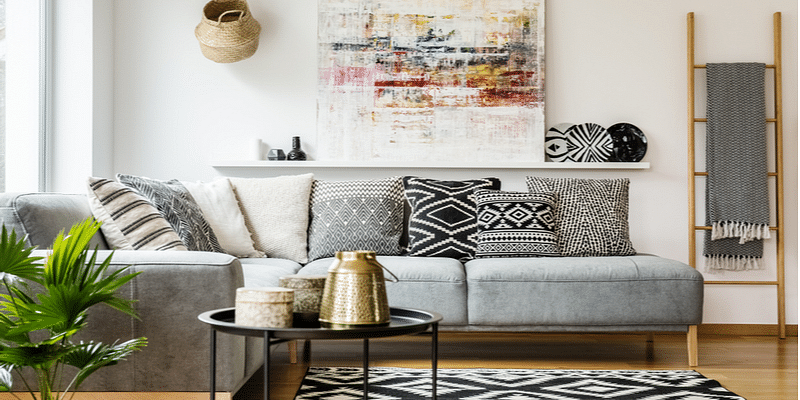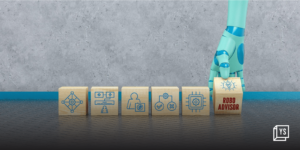Technology is evolving at an accelerated pace, revolutionising the way industries have been run for decades. The home industry is no exception to this and technology is transforming the way homes are designed, built, and lived in.
Customising design
One of the biggest challenges that homeowners face during their home interiors and renovation journey is the gap between what they want and what’s available in the market. Large Language Model (LLM) and machine learning (ML) driven discovery of information using tools such as Bard, ChatGPT, etc. will play a significant role in bridging this gap.
Home is one of the most personalised purchases that anyone makes over their lifetime. Homeowners want their homes to reflect their personality, style, and preferences. Using technologies like 3D printing, homeowners are able to commission extremely personalised furniture and decor for their homes. A key element in the personalisation of a home is to translate designs crafted by interior designers and contractors to the context of the homeowners.
Machine learning, in particular, is extremely powerful to help both homeowners and designers automate home design and help make choices based on the unstated needs of homeowners.
Once a personalised design is created, Augmented and Virtual reality (AR/VR) experiences are emerging as the dominant solutions replacing the time-tested PC-based 3D visualisation experiences.
This becomes particularly powerful when users can not only experience pre-created designs in AR/VR but also can modify the designs themselves in real time.
Transforming homes into dream spaces
Ascertaining authenticity is one of the key challenges for buyers of high-end furniture and other luxury goods. Buyers currently depend on sourcing channels such as authorised sellers to ensure authenticity. Blockchain-based authenticity verification is changing this altogether – empowering buyers to verify their ownership and ascertain authenticity right within their mobile phones.
Technology is also transforming the way homes are built. Modular construction is becoming increasingly popular, with prefabricated components being manufactured off-site and then assembled on-site. This process reduces construction time and costs, while also producing less waste. 3D printing technology is also being explored in the construction industry, with entire homes being built using this technology.
Yet another challenge as dream spaces gets created is getting complex last-mile execution right, especially for complex installations such as custom/dynamic furniture pieces, custom kitchens, etc.
Design-integrated, AR-powered installation experiences for the last-mile workforce will revolutionize both their efficiency and speed. In tandem, these have the potential to help rein in ancillary costs of delivering dream spaces, thereby opening up personalized home design and decor to new market segments.
Connected self-managing homes are the future
Smart devices such as robotic vacuum cleaners and smart fridges are increasingly proliferating in homes, which ease the hectic schedules of current families. By learning from and adjusting to our daily routines, these devices are making our lives easier and more convenient.
As smart devices are seen in most homes, there is also an early proliferation of smart surfaces over the past few years. These surfaces, such as smart mirrors and countertops, can integrate technology to provide a more functional and efficient space.
For example, smart mirrors can be used to display weather updates, news, and even workout routines, while smart countertops can be used to charge devices and display recipes. These features not only enhance the functionality of the space but also provide a unique and personalized experience for homeowners.
Working in tandem with voice-controlled devices, connected smart homes that can not only effectively manage themselves but also increasingly personalize themselves for their residents are not too far away.
With the advent of the Internet of Things (IoT) and Artificial Intelligence (AI), smart homes will become more intuitive and responsive to the needs of homeowners.
Home industry needs to embrace technology
From personalised furniture to blockchain-based authenticity verification and AR-powered installation experiences, technology empowers homeowners to create dream spaces that reflect their personalities and style.
Smart devices and surfaces augment homes’ functionality while making our lives easier and more convenient. With the advent of IoT and AI, connected homes can also be equipped with security systems that can detect suspicious activity and alert homeowners or authorities.
Smart cameras and sensors can monitor the surroundings of the home, while smart locks can be controlled remotely through a smartphone app. These security features provide peace of mind for homeowners and create a safer living environment.
As the home industry continues to evolve with technology, it is important for professionals in the industry to adapt, stay up-to-date with the latest trends and tools (staying ahead of the curve), and provide the best possible service to their clients.
At the same time, it is important to recognise that technology is not a one-size-fits-all solution for the home industry. While technology can enhance and streamline certain aspects of the industry, it cannot replace the importance of human connection and creativity. Home design and construction are deeply personal and emotional experiences, and technology should be used to enhance these experiences, not replace them.
As the industry continues to evolve with technology, it is important to recognise both its potential and limitations. By embracing technology while also prioritising human connection and creativity, we can create truly transformative and personalised living spaces for homeowners.
Authored By Abhishek Kasina, Chief Product Officer, Livspace










